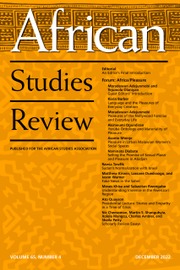Zimbabwe and South Africa share a similar historical heritage and it is not a misnomer to characterize them as Siamese twins. In 1923, the two neighbors were fated to become one country, following the end of British South Africa Company rule, had the white settler electorate of Southern Rhodesia (now Zimbabwe) voted in a plebiscite to become the fifth province of South Africa. They settled for Responsible Government instead. Despite this, the two countries have mirrored each other in politics and business, and especially in how the state interacts with business. Historically, vested mining interests, as well as agricultural and manufacturing capital concerns, have dominated the State Business Relations (SBRs) in Southern Africa’s two former settler colonies. Starting from the 1970s, the subject attracted the interest of economic historians and social historians who ably demonstrated how mining capital’s grip on the economies of the two countries created a racially exploitative political economy.
Sinan Baran—a political scientist—lays out his case in a short and concise book made up of four substantive chapters anchored between two introductory and concluding chapters. Chapter One makes a theoretical case for the Modern World Systems (MWSs) over the dependency and modernization theories as an analytical tool of understanding SBRs in Africa’s extractive industry. Chapter Two considers the experiences of miners during the period of economic liberalization and indigenization during the 1990s and after the turn of the twenty-first century. The third chapter examines the recent activities of Chinese miners while Chapter Four evaluates the sum impact of indigenization policies and Chinese mining on SBRs in the two countries that are the subject of this book.
Sinan Baran makes a compelling argument by situating South Africa and Zimbabwe within Wallerstein’s MWSs as semi-peripheral and peripheral economies respectively. He argues that attempts to liberalize and indigenize the countries’ mining economies during the 1990s and post-2000s altered the relationship between the state and mining capital but with varying “outcomes for the two countries.” This was further complicated, Baran writes, by the entrance of Chinese mining interests in Africa in recent times. In a peripheral economy such as Zimbabwe, with its weak “political frameworks,” Baran contends, the mix between disastrous indigenization policies and insidious Chinese mining capital has led to the fracturing of SBRs, whereas South Africa has been able to use its semi-peripheral status to forge an uneasy alliance between the state and mining and, to a certain extent, ward off harmful aspects of Chinese money in its extractive industry. In concluding remarks, Baran urges more dialogue between government and capital to consolidate SBRs so as “to attract more investment.” Although the use of MWSs to understand SBRs in South Africa and Zimbabwe may be new, empiricist historians of the region have long puzzled over the nature of the relationship between the state and business not only in mining but in agriculture and manufacturing as well.
When it comes to methods and sources, the author writes from a political science approach, and to his credit, grounds his argument on strong theoretical engagement but perhaps at the expense of solid primary sources. For example, the book solicits information from just seven interviewees who are at best “peripheral” to the mining industry in both South Africa and Zimbabwe. There is also no effort to corroborate the claims made by some of his high-placed informants. Added to the above is the fact that “fieldwork” was done in just South Africa. This seems inadequate for a book of this magnitude in the case studies and themes it covers. The book’s argument could have been enhanced through a diverse selection of oral sources. Interviews with past and present officials of the ruling political parties in the two countries, beneficiaries of Zimbabwe’s Indigenization and Economic Empowerment and South Africa’s Broad Based Black Economic Empowerment, and even artisanal miners could have broadened this discussion. Clearly, the voices in the mining industry are more plural beyond the elite mining consultants that the book consults. There are many other written documents that the author could have employed to glean the SBRs in mining in both countries. For instance, mining business associations such as the Mines Council of South Africa, the Chamber of Mines of South Africa, and the Chamber of Mines of Zimbabwe have left a rich archival trail of informative documents. Furthermore, mining makes for big news and the author could have employed some of the leading business and political newspapers in South Africa. While Zimbabwe’s state-owned The Herald parrots the official narrative, it is a useful insight into government’s engagement with business. In addition, Hansards from both countries can also be critical in understanding and historizing the shifts in government policy around mining. Lastly, the book is written through abbreviations which, added to the intext referencing, interrupts the flow of its argument, sometimes making it a difficult read. Nevertheless, scholars, policymakers and the general reader will find this book useful in explaining the African extractive sector, recent Chinese investment in Africa and the fraught relationship between African governments and business.

